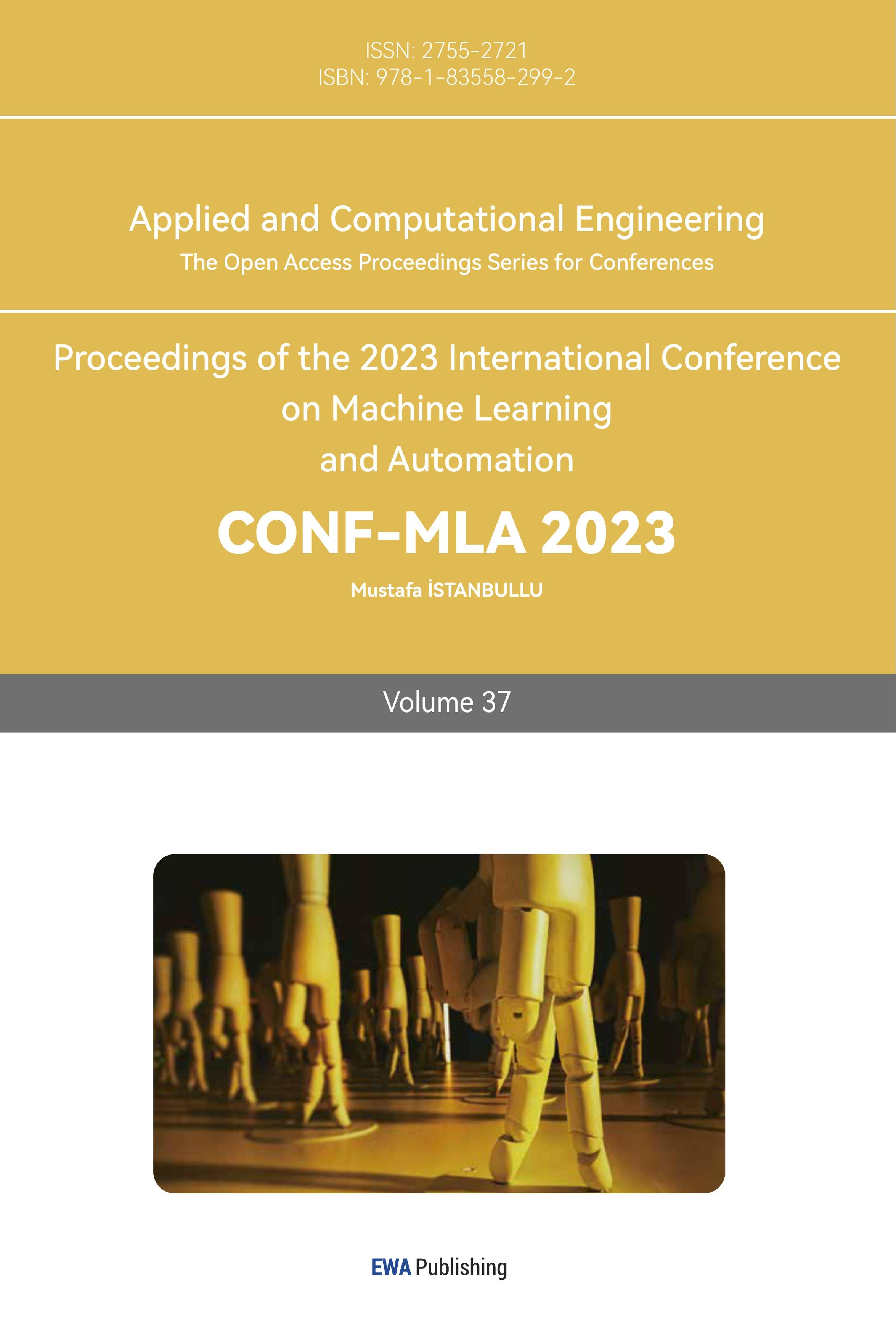References
[1]. Burrus C S, Gopinath R and Guo H 2015 “Wavelets and Wavelet Transforms”. Accessed: Aug. 25, 2023. [Online]. Available: http://cnx.org/content/col11454/1.6/
[2]. Sifuzzaman M, Islam M R and Ali M Z 2009 “Application of Wavelet Transform and its Advantages Compared to Fourier Transform”. Journal of Applied Science, vol 13, pp.121-134
[3]. Mathworks 2023 Image Quality Metrics. Accessed: Aug 25, 2023. [Online]. Available: https://www.mathworks.com/help/images/image-quality-metrics.html
[4]. Hassan M A, Al-Azawi R G and Gittaffa S A 2006 “Digital Image Compression Using Fourier Transform and Wavelet Technique”. Journal of Engineering and Development, vol 10, no. 4, pp.153-165
[5]. Smith S W 1997 The Scientist and Engineer’s Guide to Digital Signal Processing. San Diego, California: California Technical Pub
[6]. Anitha T G and Ramachandran S 2013 “Novel Algorithms for 2-D FFT and its Inverse for Image Compression”. 2013 International Conference on Signal Processing, Image Processing and Pattern Recognition (ICSIPR) pp.1-4
[7]. Kaur S et al. 2022 “Optimizing Fast Fourier Transform (FFT) Image Compression using Intelligent Water Drop (IWD) Algorithm”. International Journal of Interactive Multimedia and Artificial Intelligence, vol 7, no. 7, pp.48-48
[8]. Shah-Hosseini H 2009 “The intelligent water drops algorithm: a nature-inspired swarm-based optimization algorithm”. Int. J. Bio-Inspired Computation, vol 1, pp.71-79
[9]. Lees K 2002 “Image Compression Using Wavelets” pp. 1-40
[10]. Yadav R K, Gangwar S P and Singh H V 2012 “Study and analysis of wavelet based image compression techniques”. International Journal of Engineering, Science and Technology, vol 1, no.1, pp.1-7
[11]. Karim S A A, Karim B A, Hasan M K, Kamarudin M H and Sulaiman J 2011 “Wavelet Transform and Fast Fourier Transform for Signal Compression: A Comparative Study”. 2011 International Conference on Electronic Devices, Systems and Applications (ICEDSA) pp.280-285
[12]. Samulski M 2005 “Compression of Images, Fourier and Wavelets”. pp.1-29
[13]. Ebrahimi F, Chamik M and Winkler S 2004 “JPEG vs. JPEG2000: An Objective Comparison of Image Encoding Quality”. The International Society for Optical Engineering (SPIE)
Cite this article
Kan,Y. (2024). A comparison of application of Fourier Transform and Wavelet Transform on image compression. Applied and Computational Engineering,37,149-154.
Data availability
The datasets used and/or analyzed during the current study will be available from the authors upon reasonable request.
Disclaimer/Publisher's Note
The statements, opinions and data contained in all publications are solely those of the individual author(s) and contributor(s) and not of EWA Publishing and/or the editor(s). EWA Publishing and/or the editor(s) disclaim responsibility for any injury to people or property resulting from any ideas, methods, instructions or products referred to in the content.
About volume
Volume title: Proceedings of the 2023 International Conference on Machine Learning and Automation
© 2024 by the author(s). Licensee EWA Publishing, Oxford, UK. This article is an open access article distributed under the terms and
conditions of the Creative Commons Attribution (CC BY) license. Authors who
publish this series agree to the following terms:
1. Authors retain copyright and grant the series right of first publication with the work simultaneously licensed under a Creative Commons
Attribution License that allows others to share the work with an acknowledgment of the work's authorship and initial publication in this
series.
2. Authors are able to enter into separate, additional contractual arrangements for the non-exclusive distribution of the series's published
version of the work (e.g., post it to an institutional repository or publish it in a book), with an acknowledgment of its initial
publication in this series.
3. Authors are permitted and encouraged to post their work online (e.g., in institutional repositories or on their website) prior to and
during the submission process, as it can lead to productive exchanges, as well as earlier and greater citation of published work (See
Open access policy for details).
References
[1]. Burrus C S, Gopinath R and Guo H 2015 “Wavelets and Wavelet Transforms”. Accessed: Aug. 25, 2023. [Online]. Available: http://cnx.org/content/col11454/1.6/
[2]. Sifuzzaman M, Islam M R and Ali M Z 2009 “Application of Wavelet Transform and its Advantages Compared to Fourier Transform”. Journal of Applied Science, vol 13, pp.121-134
[3]. Mathworks 2023 Image Quality Metrics. Accessed: Aug 25, 2023. [Online]. Available: https://www.mathworks.com/help/images/image-quality-metrics.html
[4]. Hassan M A, Al-Azawi R G and Gittaffa S A 2006 “Digital Image Compression Using Fourier Transform and Wavelet Technique”. Journal of Engineering and Development, vol 10, no. 4, pp.153-165
[5]. Smith S W 1997 The Scientist and Engineer’s Guide to Digital Signal Processing. San Diego, California: California Technical Pub
[6]. Anitha T G and Ramachandran S 2013 “Novel Algorithms for 2-D FFT and its Inverse for Image Compression”. 2013 International Conference on Signal Processing, Image Processing and Pattern Recognition (ICSIPR) pp.1-4
[7]. Kaur S et al. 2022 “Optimizing Fast Fourier Transform (FFT) Image Compression using Intelligent Water Drop (IWD) Algorithm”. International Journal of Interactive Multimedia and Artificial Intelligence, vol 7, no. 7, pp.48-48
[8]. Shah-Hosseini H 2009 “The intelligent water drops algorithm: a nature-inspired swarm-based optimization algorithm”. Int. J. Bio-Inspired Computation, vol 1, pp.71-79
[9]. Lees K 2002 “Image Compression Using Wavelets” pp. 1-40
[10]. Yadav R K, Gangwar S P and Singh H V 2012 “Study and analysis of wavelet based image compression techniques”. International Journal of Engineering, Science and Technology, vol 1, no.1, pp.1-7
[11]. Karim S A A, Karim B A, Hasan M K, Kamarudin M H and Sulaiman J 2011 “Wavelet Transform and Fast Fourier Transform for Signal Compression: A Comparative Study”. 2011 International Conference on Electronic Devices, Systems and Applications (ICEDSA) pp.280-285
[12]. Samulski M 2005 “Compression of Images, Fourier and Wavelets”. pp.1-29
[13]. Ebrahimi F, Chamik M and Winkler S 2004 “JPEG vs. JPEG2000: An Objective Comparison of Image Encoding Quality”. The International Society for Optical Engineering (SPIE)









